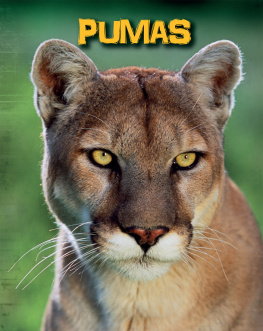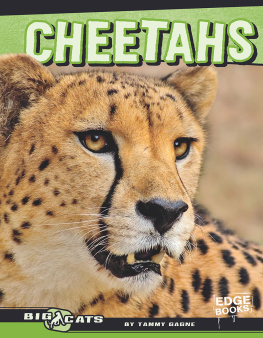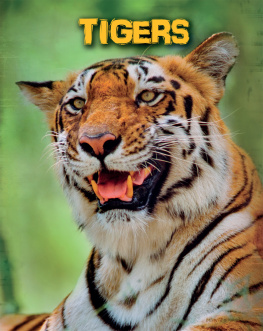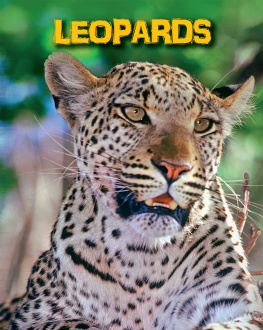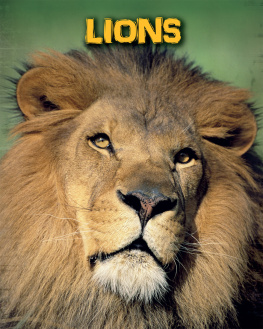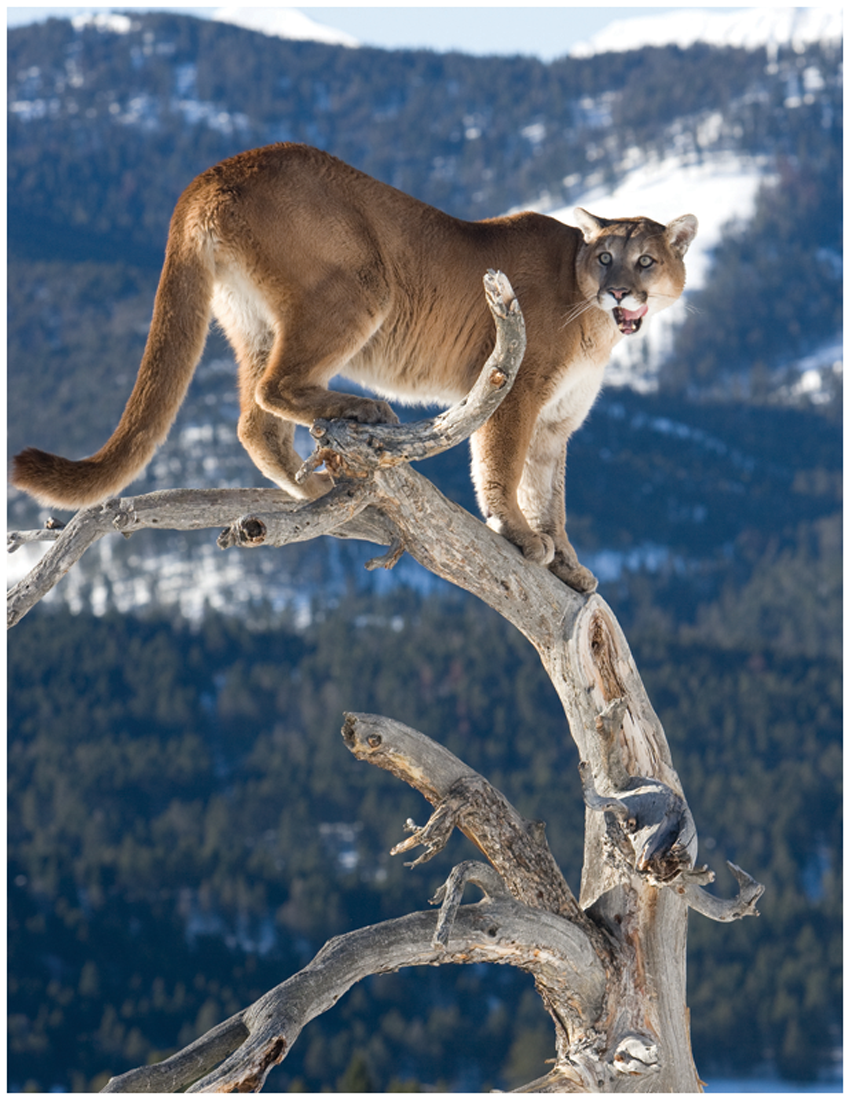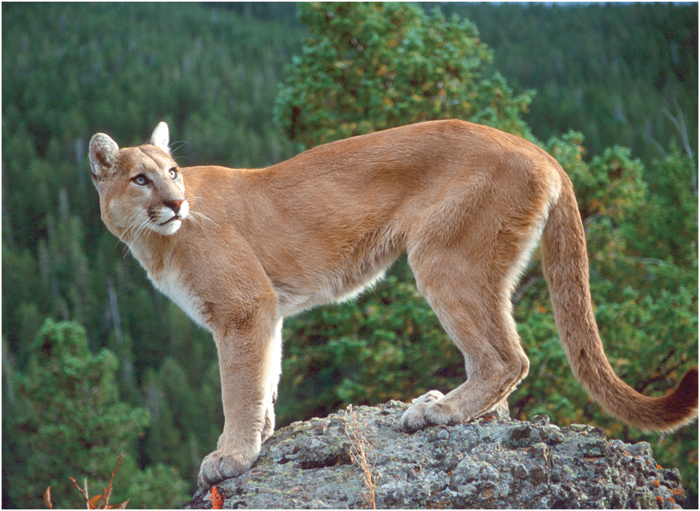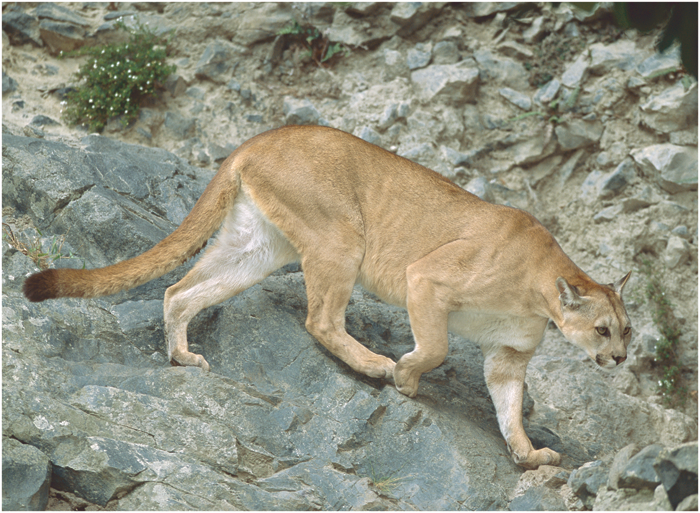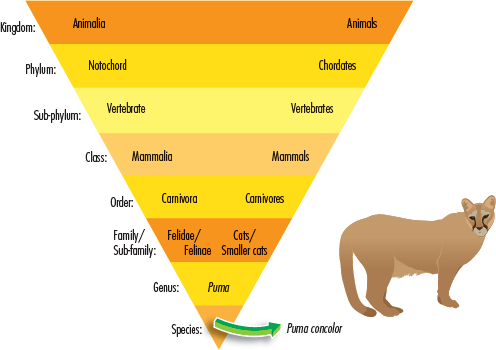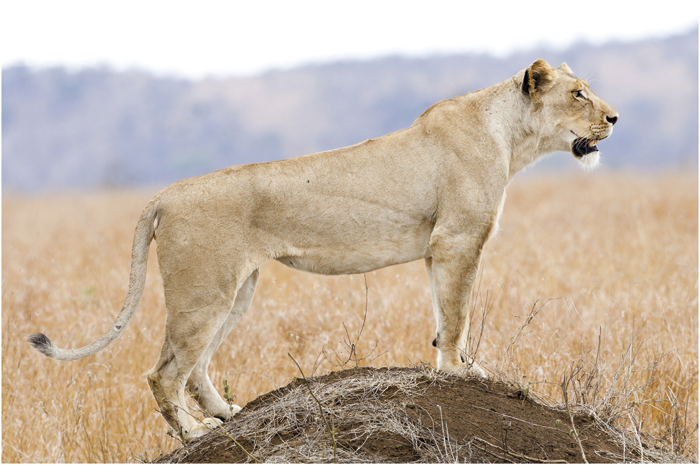Burnie, David. Countdown to Extinction . Oxford, UK: Oxford University Press, 2008.
Cox, Michael. Big Cats . New York: Bloomsbury Publishing, 2012.
Ganeri, Anita. South Americas Most Amazing Animals . Chicago: Raintree, 2008.
What Are Big Cats?
A silent hunter slinks unseen across a rocky landscape. It spots a deer grazing downbelow. The predator creeps closer until it crouches on a rock just behind its prey.Then, with one powerful leap, the cat seizes its victim, pulling it to the groundand breaking its neck. The puma has caught its latest meal.
Pumas are mammals that are often included in a group called big cats. The generalterm big cat refers to wild cats that are significantly larger than small wildcats, such as lynx, serval, and ocelot. These larger cats include pumas, jaguars,cheetahs, lions, tigers, leopards, snow leopards, and clouded leopards. However,sometimes the term big cat is used more specifically to refer to large wild catsthat can roar: lions, tigers, leopards, and jaguars. Pumas are unable to roar butdo make a range of other sounds.
The wider group of big cats that includes pumas shares the following characteristics:
- They are all above a certain size.
- They are all carnivores.
- None of them is hunted for food by another predator once they reach adulthood.
Big cats live in different habitats around the world, ranging from the rainforestsof South America to African grasslands and the mountains of Southeast Asia. Some,such as leopards, can climb trees while others, such as jaguars, are strong swimmers.Lions are the most social cats, living in groups called prides. All big cats havecoloring or patterns on their fur that help to conceal them as they hunt.
Pumas are solitary and beautiful wild animals.
What Are Pumas?
Pumas are the second largest cat in North and South America, after the jaguar. Theyhave long, slender bodies with a flexible spine and a very long tail that is abouta third of the cats total length. Pumas have muscular rear legs that give them thepower to jump great distances. Their paws are large, with sharp, curved, retractable claws. Their heads are relatively small and broad, with short, round ears and largeeyes.
Adult pumas have unpatterned coats, which ranges from a sandy yellow to a brownishred. Some pumas have silvery-grey fur. Their underside is a paler color and the sidesof their muzzle and tips of their tails are darker. Their hair is short and roughlytextured.
Pumas that live close to the equator , tend to be smaller than those that live furthernorth and south. This is because the cats living in cooler climates tend to eat larger prey than those in tropical habitats.
A pumas back legs are bigger and more powerful than its front legs.
Male pumas are larger than females. The largest males can weigh up to 220 pounds(100 kilograms), the average being about 136 pounds (62 kilograms). Male pumas tendto be around 4 feet (1.2 meters) long, with a tail of about 2.5 feet (75 centimeters).Females are shorter and reach an average weight of about 93 pounds (42 kilograms).Their body length ranges between 90 and 3 to 5 feet (150 centimeters), while theirtails are up to 32 inches (79 centimeters) long.
RECORD HOLDER
Pumas have many different names and are also known as cougars, mountain lions, panthers,catamounts, and painters. This cat holds the Guinness world record for the mammalwith the most names!
How Are Pumas Classified?
Classification groups
Classification triangles are used to show how each living thing is classified . Towardsthe bottom of the triangle each group contains fewer and fewer members. For example,there are fewer animals in the order Carnivora (carnivores) than there are in theclass Mammalia (mammals), and so on.
Pumas are in the family Felidae, which includes all cats, large and small, wild anddomesticated.
Living things are given a Latin name, such as Puma concolor , so they have a singlename rather than many different names in different languages. The puma is also amember of the sub-family Felinae, and so is related to all the smaller cats, suchas the cheetah, lynx, and the domestic pet cat.
This diagram shows how the Puma is classified.
Although pumas are sometimes called mountain lions, a puma looks quite differentfrom an African lion (such as the one shown here). Lions are bigger and more powerful.
SUBSPECIES
Scientists think there are six subspecies of puma. Its possible that the Floridapanther is a seventh subspecies, but there are very few of these cats left in thewild. Some subspecies are flourishing in many areas but others are endangered.
Where Do Pumas Live?
All wild animals live in habitats. A habitat is a place where an animal has everythingit needs to survive, including food, water, and shelter. Some big cats live in veryparticular habitats but pumas are able to thrive in many different types of surrounding.
Wide-ranging cat
Pumas can be found living across a huge range, from Canada, down the west of theUnited States, and on through Central and South America to the south of Chile. Theymake their home in 28 different countries.
This widespread geographical range means that pumas live in a variety of habitats.These include pine forest, tropical forest, grasslands, swamps, mountains, and colddesert regions at a high altitude. Pumas are very good at adapting to new surroundingsand although they prefer to live where there are plenty of plants to provide cover,they are also able to live in more open landscapes. A puma needs to live where thereis plenty of prey and enough cover, such as rocks, caves, and trees to provide shelter.
FALLING NUMBERS
Pumas may still live over a huge geographical range but they are found in far fewerplaces today than in the past. Pumas used to live from the west coast to the eastcoast of North America, and as far south as southern Argentina and Chile. Today however,they are limited to a smaller range, with none left in eastern North America apartfrom very few pumas found in Florida.

